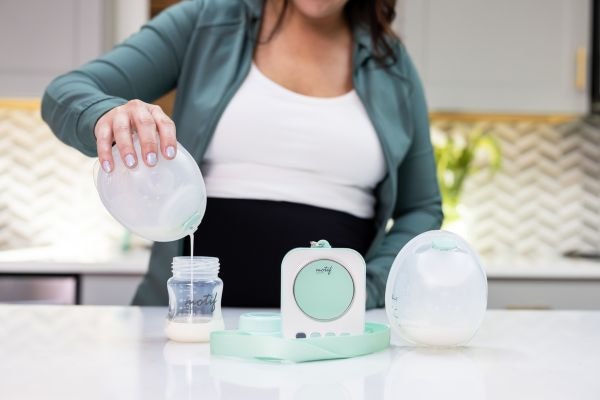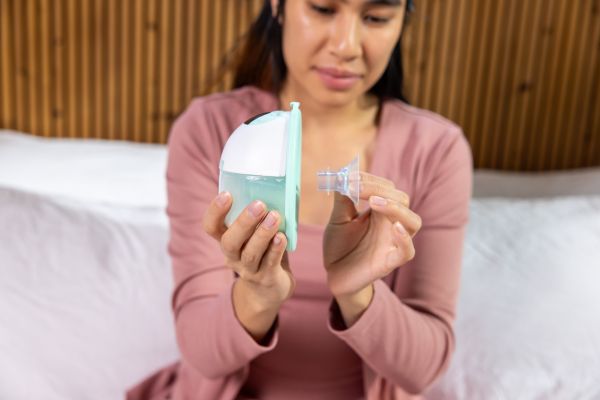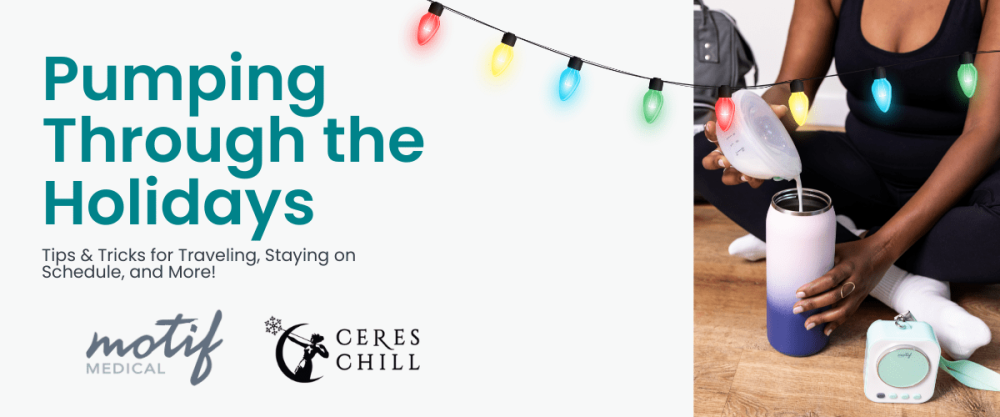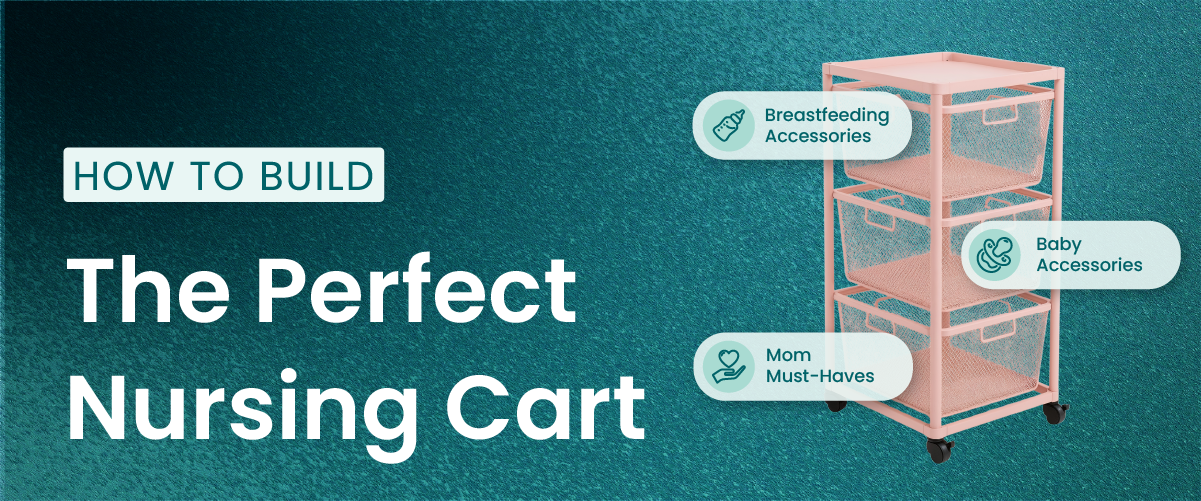What Are Elastic Nipples?
If you have done much internet searching regarding flange sizing, you have very likely stumbled across the term, elastic nipples. If you’ve ever wondered what elastic nipples are, if you have them, how is pumping with elastic nipples different, and what strategies make pumping with elastic nipples easier, then this guide is for you!
Nipples are supposed to be able to stretch. This stretch, or elasticity, allows your baby to take your breast tissue into their mouth and comfortably transfer milk. Elastic nipples are simply a term for nipple tissue that stretches a bit more than usual when the suction of a breast pump is applied. Elastic nipples tend to extend deep into the breast pump flange tunnel even when common flange sizing guidance is used. Remember that all breasts are different, and all breast tissue responds differently to pumping. Having elastic nipples isn’t bad or wrong! It’s just a difference in breast tissue.
Do I Have Elastic Nipples?
If pumping is painful or ineffective, you may have wondered if you have elastic nipples. Here are some signs of elastic nipples:
- Your nipples stretch to the end or nearly the end of the flange tunnel, no matter which size of breast pump flange you use.
- You feel tugging or pinching, no matter which size of flange you use.
- Your areola is pulled into the flange tunnel, no matter which size you use.
- Your nipples seem to swell to fill the flange tunnel, no matter which size you use.
- You find it difficult to get milk to come out when using a breast pump, despite having a healthy milk supply.
It’s not uncommon for moms to confuse the signs of using a flange that’s too large with signs of elastic nipples. Keep reading to learn how you can make pumping with elastic nipples easier.
How is Pumping With Elastic Nipples Different?
It can be more difficult to get a good flange fit if your nipples have a bit of extra elasticity. This can result in painful pumping and reduced pumping output. Excessive stretching can cause nipple inflammation and injury, even cracked and bleeding nipples. If the flange doesn’t fit well, there can be issues with pump suction.
When nipple tissue stretches too far into the flange tunnel and the areola is also pulled in, it’s not unusual for moms to feel like their breasts are not being drained well. Ineffective milk removal can lead to engorgement, clogged ducts, and even mastitis.
Tips for Pumping Success With Elastic Nipples
Don’t lubricate your flanges.
Many moms use coconut oil, lanolin, pump spray, or nipple cream to lubricate their breast pump flanges in an effort to make pumping more comfortable. For moms who have tissue with a bit of extra stretch, lubricating pump flanges can actually make things worse. The lubricant allows even more tissue to be drawn into the flange tunnel.
Try a smaller flange size.
While typical flange sizing guidance is to measure the base of the nipple and add 0-3 mm, you might need a different approach if you’re still seeing areola come into the flange tunnel. Start with your nipple measurement and try a flange that is exactly the same size. Opting for a flange that is closely fitted to your nipple will help minimize stretch and reduce the amount of areola that’s coming into the flange tunnel. If there is a significant difference between the size of your nipple base and your nipple tip, you may need a flange that is close to the size of your nipple tip.
Remember, it’s ok for your nipples to touch the inside of the flange as long as it’s not painful and you’re seeing good output!
Consider silicone inserts or specialty flanges.
If a smaller size still isn’t cutting it, consider adding a silicone flange insert. The silicone material can help to hold some of your areola back. The Motif Aura Glow inserts can be used with the 24mm Luna breastshield for a more secure fit.
Use a hands-on pumping technique.
Gentle breast massage while pumping can help anyone get more output, but it can be especially helpful for moms who struggle with elastic nipples. Start with gentle stroking toward your nipples, then use gentle circular massage before ever placing the flanges over your breasts. This helps to stimulate letdown. Once you begin pumping, feel for areas of breast fullness and use gentle massage and compression over those areas. You’ll be able to see which movements help increase the drips and sprays of milk while you’re pumping. Always, always, always, keep the pressure of your massage very light! Too much pressure can create breast inflammation that leads to problems like clogged ducts.
Try using less suction.
Often, in an effort to get more milk output when pumping, moms turn up the suction. More suction doesn’t necessarily equal more milk, and in many cases, it can actually decrease your output. This is especially true if your nipples have extra stretch. Try turning down the suction so that less of your areola is being drawn into the flange tunnel and see if it helps increase the amount of milk you are able to pump.
Keep the pump in Massage Mode.
If your nipples tend to stretch more than usual despite having the correct flange size, consider keeping your pump in Massage Mode. The cycle speed is faster in Massage Mode, and for many moms, this results in more milk output when pumping.
Use a combination of the tips above.
Pumping with elastic nipples can be challenging, and it’s very likely that you’ll get the best results by using a combination of the tips above. If, after trying these tips, you’re still having pain and poor emptying when pumping, reach out to an IBCLC (International Board Certified Lactation Consultant) who specializes in pumping. An IBCLC can observe a pumping session and provide personalized advice on how to make pumping more comfortable and effective.
Can I Use a Portable or Wearable Breast Pump If I Have Elastic Nipples?
Yes, you can! Incorporating the tips in this guide can help increase your chances of success with a wearable or portable pump. The Motif Aura Glow has a silicone breastshield that can help hold back your areola when pumping. Both the Motif Aura Glow and Motif Roam come with multiple flange sizing inserts in the box to help you find the right fit. Additional flange sizing inserts are also available in smaller sizes.
Information provided in blogs should not be used as a substitute for medical care or consultation.









